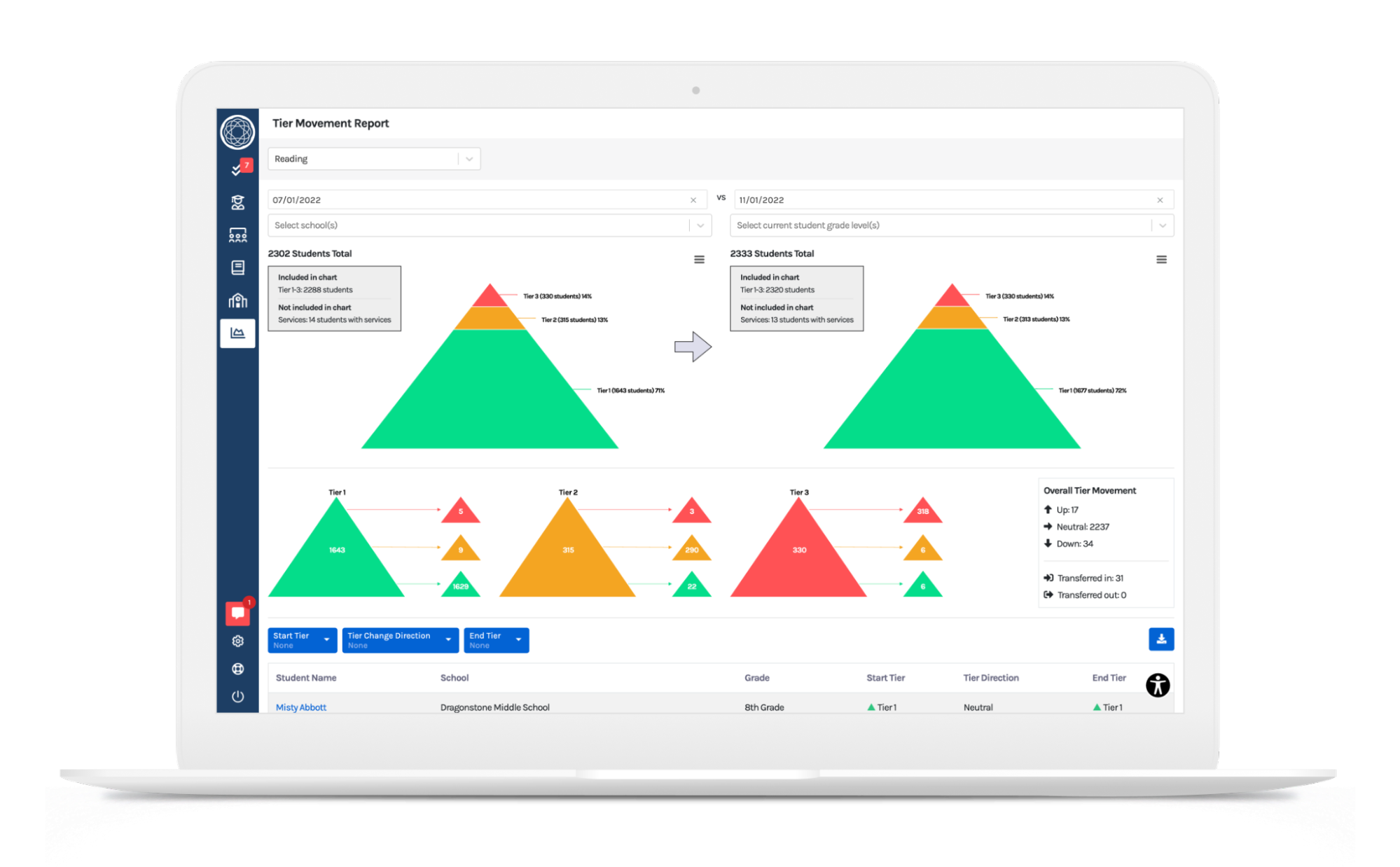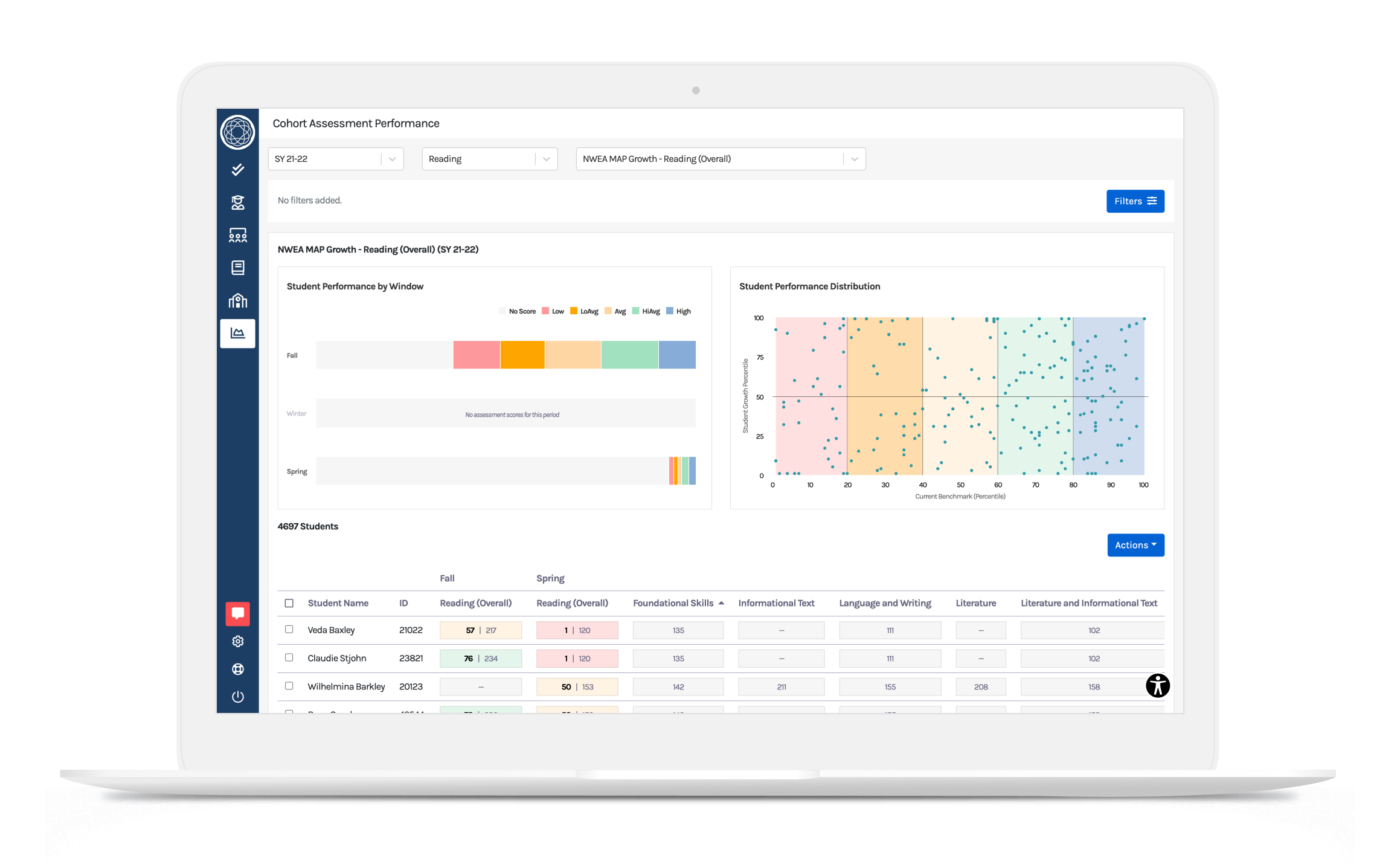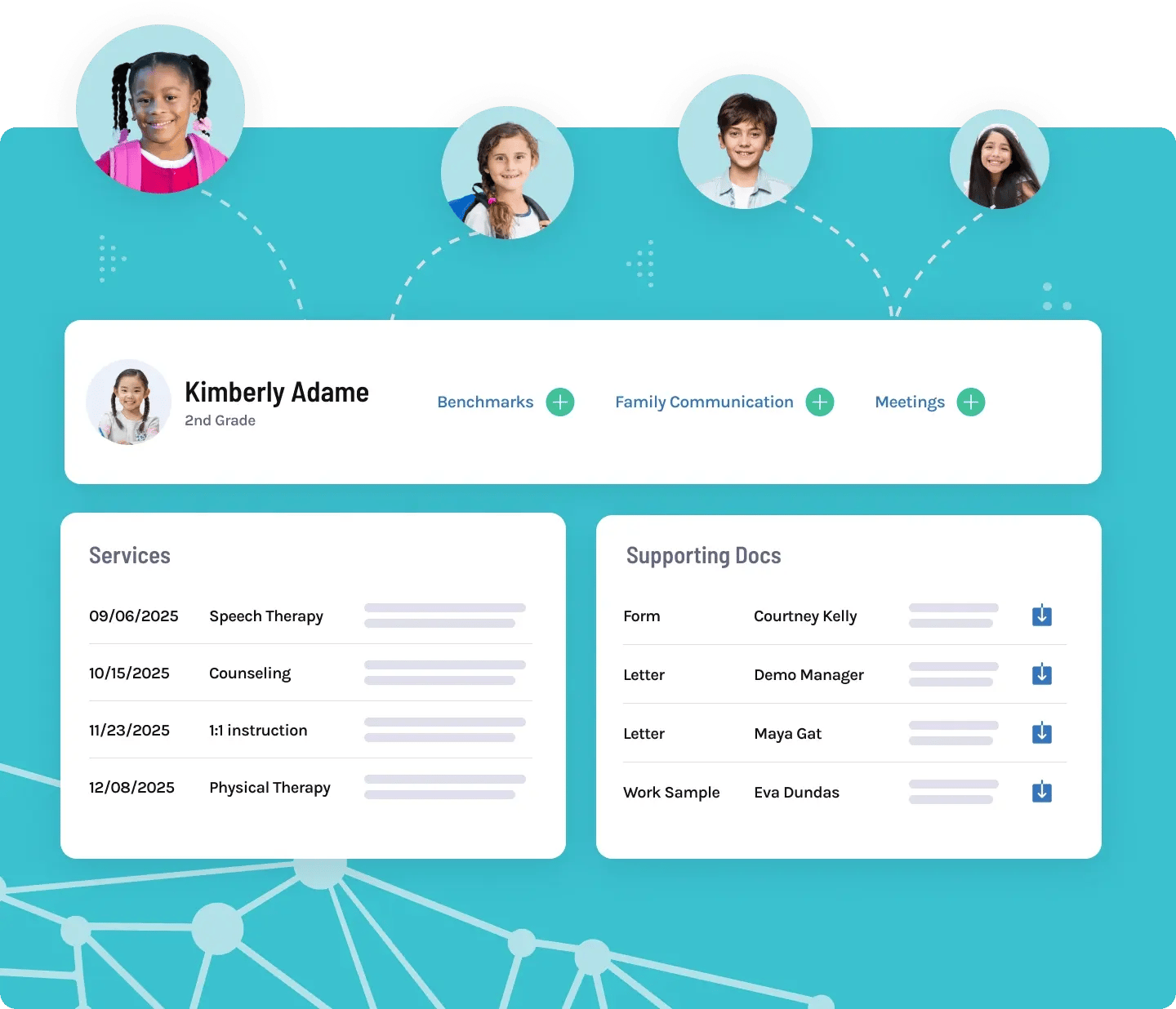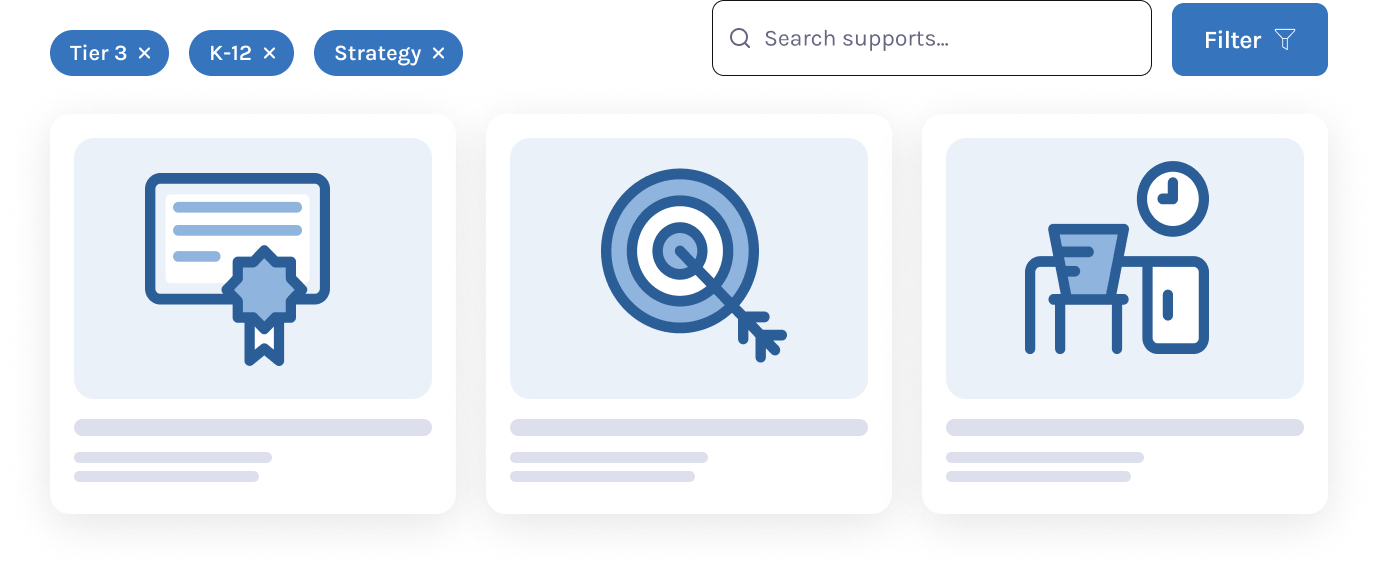Your MTSS team works hard to create research-based academic and behavior support plans and make the best use of intervention time. . . but there are often barriers to actually implementing best practices in the day-to-day life of a school. Funding, staffing, professional learning, and scheduling are all factors that can affect a school’s ability to provide instruction and interventions in line with what we know from research to be best practice. What to do?
Intervention Planning in MTSS: Key Takeaways
- Focus your toolkit: Curate a manageable set of high-quality, evidence-based interventions instead of overwhelming staff with too many options.
- Match support to need: Differentiate Tier 2 and Tier 3 plans, and build capacity among teachers so resources reach the right students.
- Strengthen the foundation: Monitor system-level outcomes and ensure strong Tier 1 core instruction so interventions truly accelerate growth.
Here are five ways to balance best practices in MTSS with common barriers in education:
Curate Your Intervention Options
It is unlikely that one intervention program will meet the needs of all students. That is why most educators require access to multiple intervention programs, strategies, and tools. However, having too many intervention options to choose from can lead to issues with implementation integrity and fidelity. It is common for teachers and interventionists to have very little guidance or structure around which interventions to use. MTSS leaders should work towards having a solid number of intervention options to cover key skill area needs across grade levels, and not more.
For example, phonemic awareness is an important early reading skill that young students need to master in order to become strong readers. Educators working in the early grades should have access to lessons and materials that effectively address this skill across each tier level of support. Instead of purchasing five different early phonics interventions, focus on only one or two so that educators become proficient in their implementation. (If you happen to be looking for a free resource for early reading skills, check out the Florida Center for Reading Research’s Student Center Activities.)
The Branching Minds Intervention Library is the most comprehensive and well-curated collection of evidence-based learning supports available in any MTSS platform. Our extensive collection includes both paid and free intervention programs, strategies, activities, and resources. Each support is thoroughly explained, guiding educators on its purpose, the target audience, delivery methods, and supporting research.
Curated by our learning science team, these resources are sourced from highly respected organizations like the Florida Center for Reading Research and What Works Clearinghouse and categorized according to ESSA evidence guidelines to ensure they meet the highest standards. AND—you can easily customize the library to fit the needs of your staff and students!
Resource: Five Ways the Branching Minds Intervention Library Helps You Find ‘Just Right’ Interventions
Differentiate Your Tier 2 and 3 Intervention Plans
Students identified as needing Tier 2 support typically have skill gaps that can be addressed in small, focused instructional groups using an evidence-based intervention 2-3 times per week. Many schools use a Standard Treatment Protocol, where all students needing Tier 2 support receive the same intervention in that topic area. For schools that do not have the resources to problem-solve for each student, this can make your MTSS intervention planning practice more efficient. It also reserves resources for those students who are performing significantly below grade level expectations and require a more intensive, Tier 3 level of support. Clear expectations and support from MTSS leadership help make the most of limited resources.
TIP: If your school is limited in trained interventionists and specialists, you can invest in basic Tier 2 support training for classroom teachers, or even use an evidence-based computer adaptive intervention program. Then, your specialists can focus on delivering Tier 3 support.
 Hear how one elementary school utilized their specials teachers to help with Tier 2 groups.
Hear how one elementary school utilized their specials teachers to help with Tier 2 groups.
Evaluate Your Support System: Is It Working?
Don’t waste the time and effort you put into your intervention planning and implementation, especially if you are already working with limited resources. Every school should have a clear process for evaluating its intervention practices at a system level.
One way to do this is by tracking Tier-level movement over time. For example, if your Tier 2 support is effective, then you should observe more students moving from receiving Tier 2 support to Tier 1 than to Tier 3 or staying in Tier 2. This is because an effective Tier 2 support system will give students the extra boost they need to bring them back up to the performance level of their peers. If most students are not moving in the right direction, it could indicate issues with implementation, training, targeting the appropriate skill area needs, or with the intervention itself. The same goes for Tier 3 support systems – students should be showing improvement over time. Leadership should not wait until the end of the year to monitor these system-level trends. Instead, this review process should be completed after each screener window once tier-level recommendations have been identified.

With the Branching Minds platform, you can easily track student progress with the Tier Movement Report. You'll see exactly how students move across support levels over time in each subject area. Filters allow you to focus on specific subpopulations or cohorts, so you get a clear picture without the hassle of manually compiling data. The platform automatically tracks any changes in students' tier levels, saving you time and resources.
On-Demand Webinar: How to Lead for Improved Student Outcomes Using Real-Time, Real-Life Insights
Look at the Research Evidence
Even if your school has limited program options, it’s crucial to understand the evidence behind the interventions you're using, especially those widely implemented. Some extremely common reading practices and programs have minimal research support. While many educators are aware of these issues and limitations, it can be challenging to make the recommended shifts in their reading intervention practice. This might explain why some students don’t improve despite receiving "support."
When resources are limited, focus on using evidence-based programs and practices that truly impact student growth. These approaches, grounded in learning science and child development, will save time and resources in the long run. Although these changes require planning and commitment from leaders, the first step is recognizing the limitations of certain programs and the advantages of others. To assist with this, the Colorado Department of Education has compiled a comprehensive list of evidence-based programs emphasizing teacher-directed strategies.
Resource: Branching Minds Virtual Summit: MTSS Fidelity with Intention
Don’t Forget About Tier 1
When discussing intervention planning, programs, and supports, it’s easy to focus on Tiers 2 and 3 and ignore Tier 1. However, Tier 1 instruction is the most important component of any MTSS. Your school’s Tier 1 core curriculum should be scrutinized as closely as any Tier 2 or 3 intervention or program. If students are not taught the skills needed to be successful across all topics and subject areas, you will end up with more and more students in need of Tier 2 and 3 support. This is not sustainable for any school, even those with plentiful resources.
There are also strategies that can be implemented at the Tier 1 level to ensure that each student gets what they need. For example, if student behavior is an issue, getting educators on the same page with proactive behavior management strategies is a great place to start. There are several evidence-based classroom-level academic strategies, such as partner reading and class-wide intervention for math. Additionally, reviewing student data and using it to drive decision-making shouldn’t only be reserved for students receiving Tier 2 and 3 support; assessment data should always be reviewed at the classroom, grade, and school level to identify strengths and weaknesses across cohorts.

The Cohort Assessment Performance Report on Branching Minds helps you understand Tier 1 strengths and challenges. This report highlights trends in performance for each assessment window and throughout the school year. And, you can easily take action directly from the report — grouping students, administering behavioral screeners, documenting family communications, and more. This ensures that you not only see the data but can take meaningful action.
Tier 2 and 3 Supports
Balancing best practices with the realities of your school’s resources can be challenging, but there are clear steps you can take. Start by curating a focused set of evidence-based interventions, differentiating between Tier 2 and Tier 3 supports, and regularly evaluating your system’s effectiveness. Don’t overlook the importance of strong Tier 1 instruction as the foundation for student success. Your efforts will impact student growth, even when resources are limited!

About the author
Dr. Essie Sutton
Essie Sutton is an Applied Developmental Psychologist and the Director of Learning Science at Branching Minds. Her work brings together the fields of Child Development and Education Psychology to improve learning and development for all students. Dr. Sutton is responsible for studying the impacts of the Branching Minds on students’ academic, behavioral, and social-emotional outcomes. She also leverages MTSS research and best practices to develop and improve the Branching Minds platform.

MTSS Shouldn't Be So Hard
Empower your team with actionable insights that drive success for your students, staff, and school(s).

















.png?width=716&height=522&name=Addressing%20Foundational%20Reading%20Skills%20in%20MTSS%20(preview).png)
.png?width=716&height=522&name=Understanding%20Literacy%20Basics%20(Preview).png)
